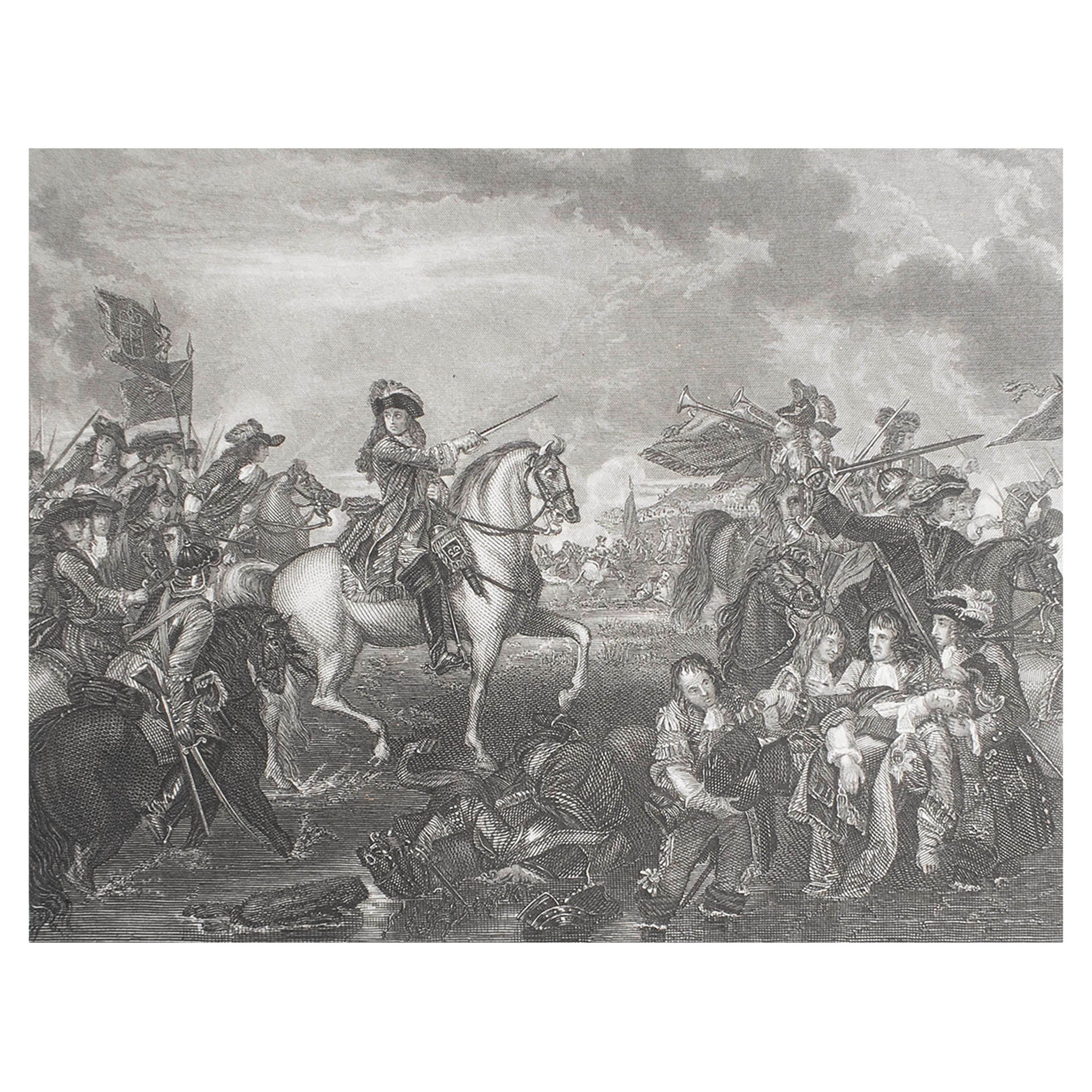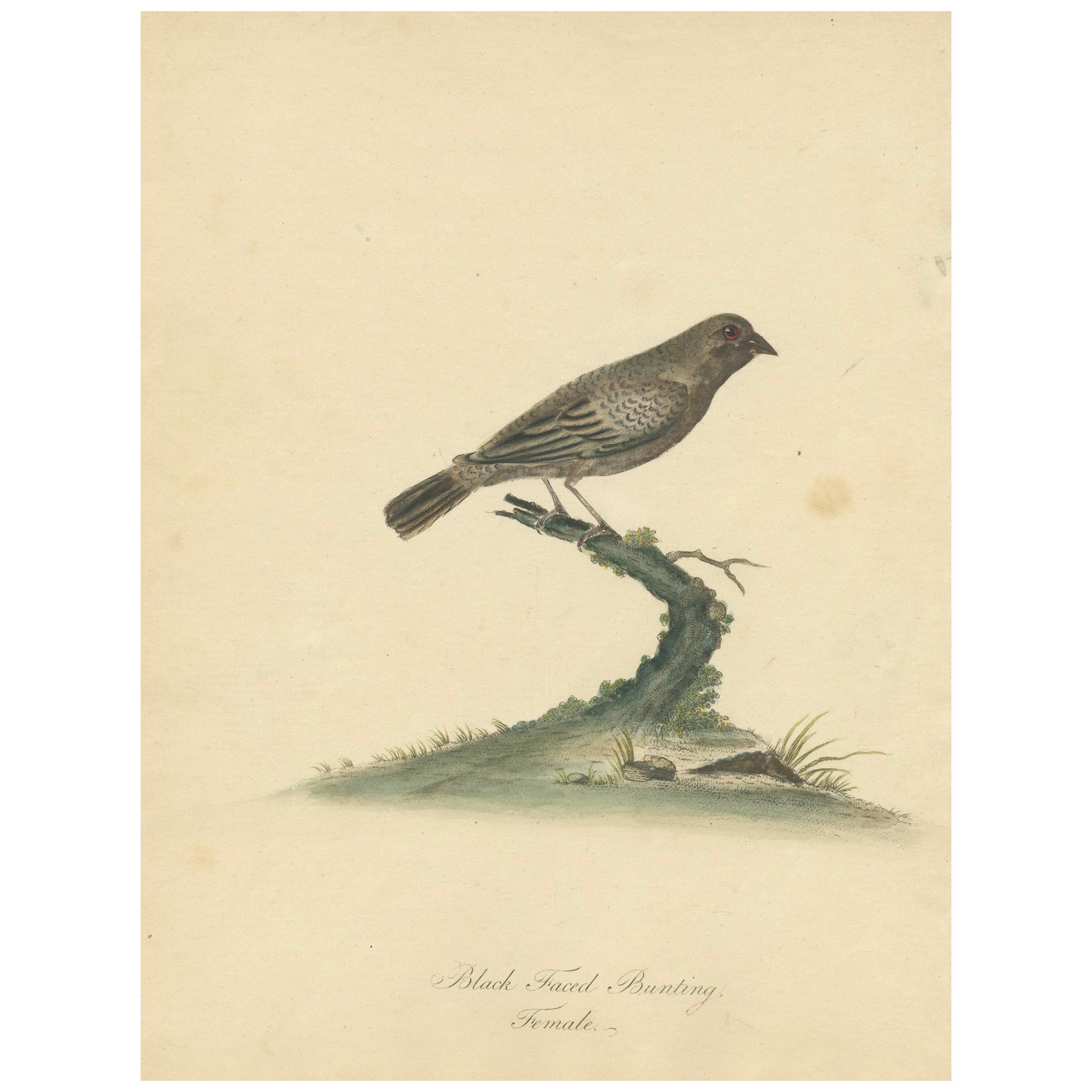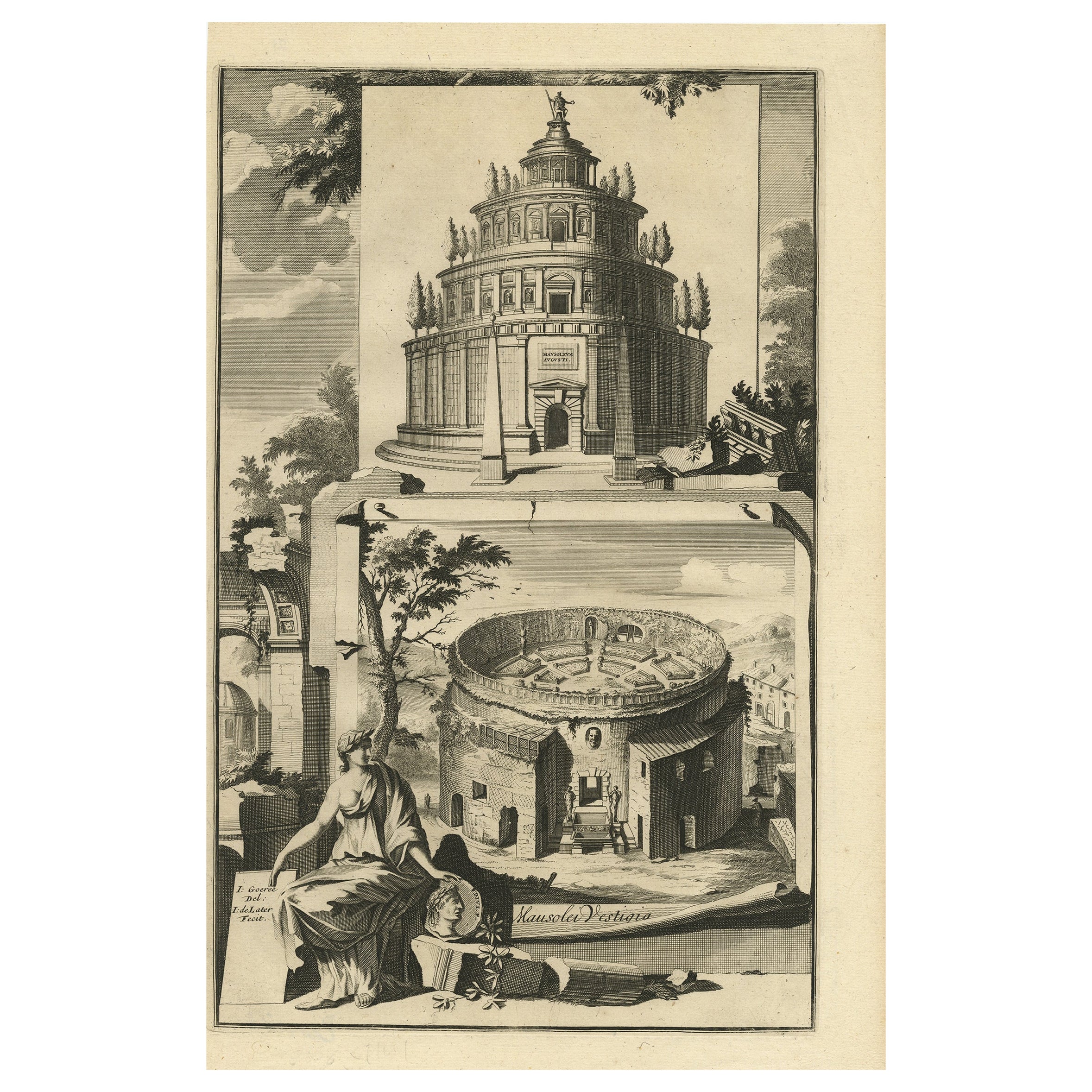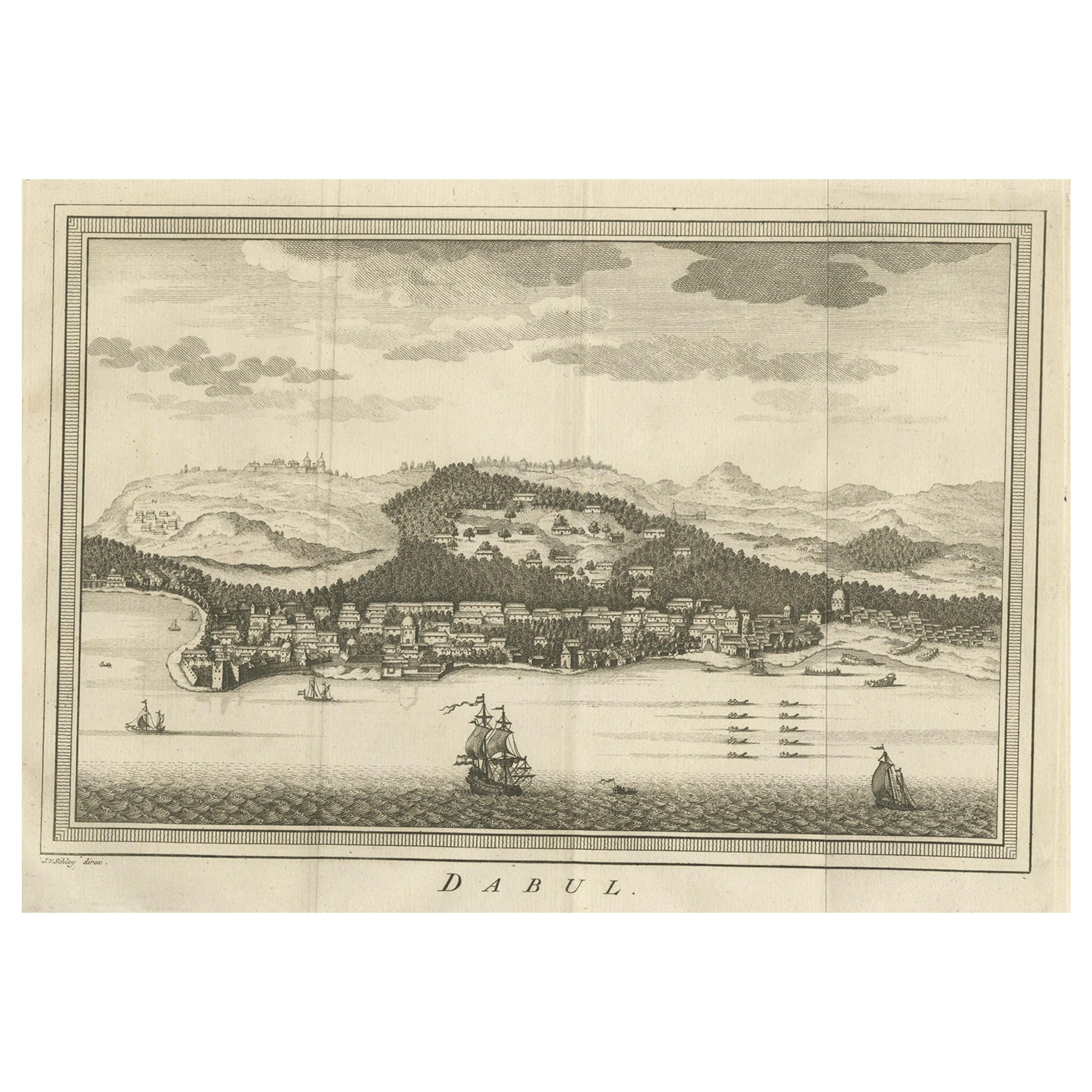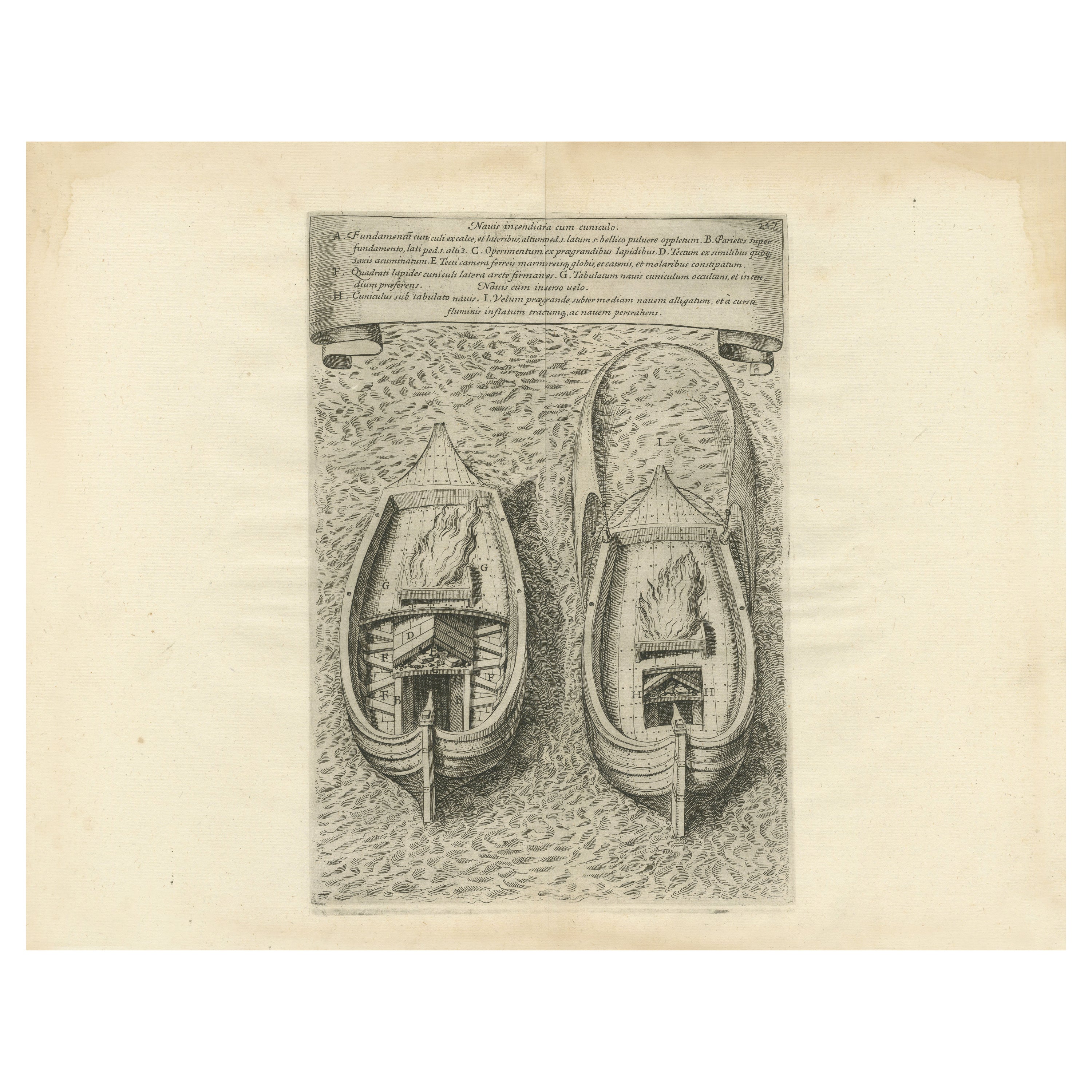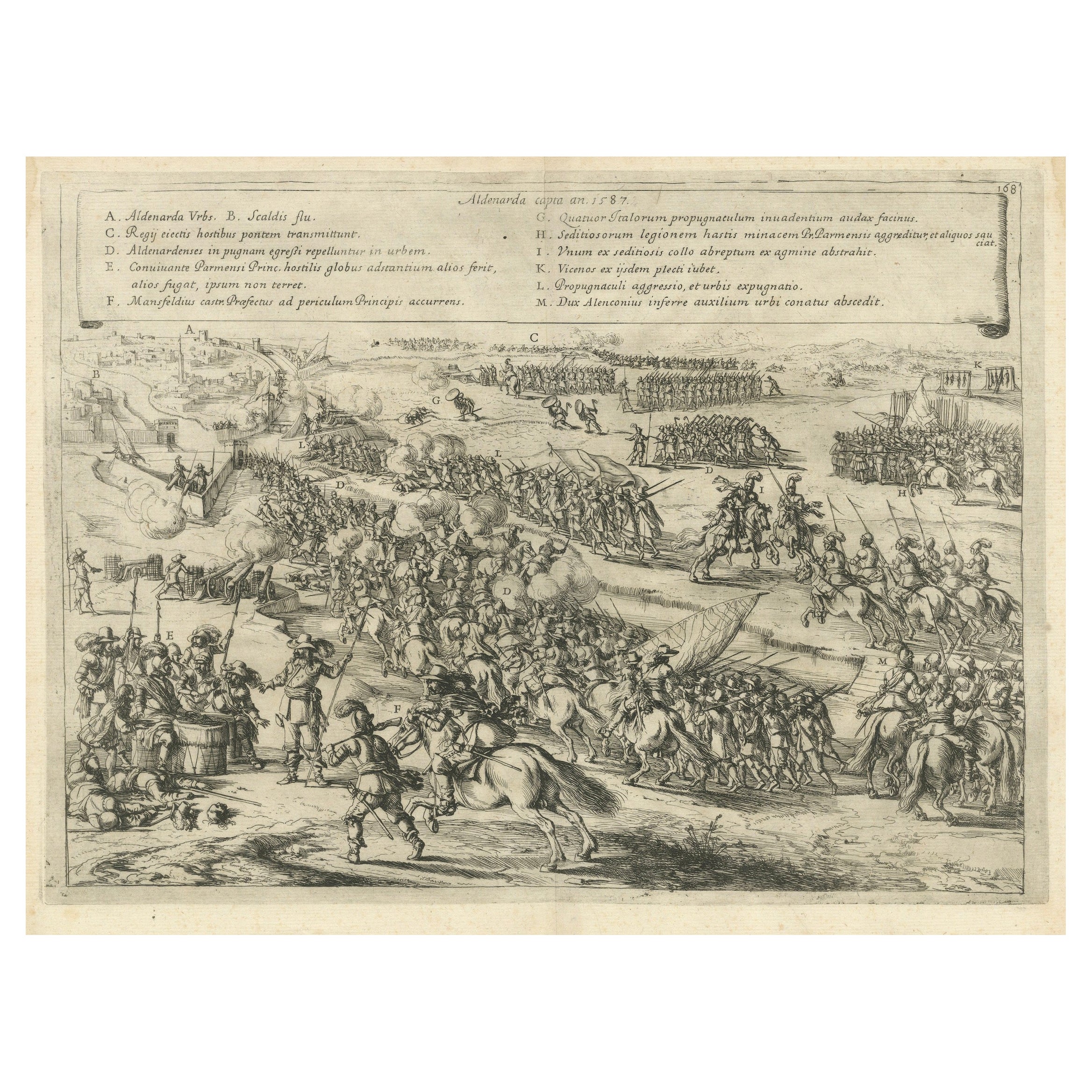Items Similar to Old Engraving of The Battle of Bergen in Hainaut during the Eighty Years', 1632
Want more images or videos?
Request additional images or videos from the seller
1 of 7
Old Engraving of The Battle of Bergen in Hainaut during the Eighty Years', 1632
About the Item
The print is a historical depiction of the Siege of Bergen (also known as Mons) in Hainaut in 1572, during the Eighty Years' War.
This event is significant as it involved Count Louis of Nassau capturing Bergen with stratagem and subsequently being besieged by the Duke of Alva, starting on August 18, 1572. The foreground of the print shows the forces of the Prince of Orange attempting to relieve the city, while the right side of the print depicts the army of Alva.
This illustration is from: Famiani Stradae Romani e Societate Iesv De bello Belgico. Romae : Typis Francisci Corbelletti, 1632 (dl. 1), fol. 262.
Mons in Hainaut won by trickery by Count Louis of Nassau, is besieged by Alva, August 18, 1572. In the foreground the army of the Prince of Orange in an attempt to relieve the city, on the right the army of Alva. With 5-line caption with the legend A-R in Latin.
The Latin translated:
The recovery of the mountains by Governor Alba. 1572.
A. Mons, City of Hainaut.
B. The Episcopal monastery, from which the people of Mons were repelled by the troops sent ahead by Alba.
C. Battle between the French under the leadership of Tensilisio and the Spaniards under the leadership of Federico, son of Alba.
D. Chaplain Vitellius, wounded, arranging the line of battle.
E. The Lenisiani routed.
F. The line of circumvallation.
G. Camp of Duke Alba.
H. Place from which the city was bombarded.
I. Army of Orange, to liberate Mons.
K. Battle between the Catholics and the Orangists.
L. Orange encouraging his men.
M. Alba sending in his men.
N. Troops of Alba hastening to support.
O. Cavalry of Alba also advancing.
P. Women of Mons discovered as scouts.
Q. Festival fires because of the news of the St. Bartholomew's Day massacre.
R. Camp of Orange, attacked during the night by the Spaniards by surprise.
- Dimensions:Height: 18 in (45.7 cm)Width: 13 in (33 cm)Depth: 0 in (0.02 mm)
- Materials and Techniques:Paper,Engraved
- Period:1640-1649
- Date of Manufacture:1647
- Condition:Good, given age. General age-related toning, creasing and/or occasional minor defects from handling. Middle fold line as issued, slightly brownish. Please study scan carefully.
- Seller Location:Langweer, NL
- Reference Number:Seller: BG-13637-91stDibs: LU3054338522242
About the Seller
5.0
Platinum Seller
These expertly vetted sellers are 1stDibs' most experienced sellers and are rated highest by our customers.
Established in 2009
1stDibs seller since 2017
1,919 sales on 1stDibs
Typical response time: <1 hour
- ShippingRetrieving quote...Ships From: Langweer, Netherlands
- Return PolicyA return for this item may be initiated within 14 days of delivery.
Auctions on 1stDibs
Our timed auctions are an opportunity to bid on extraordinary design. We do not charge a Buyer's Premium and shipping is facilitated by 1stDibs and/or the seller. Plus, all auction purchases are covered by our comprehensive Buyer Protection. Learn More
More From This SellerView All
- The Aftermath of Battle for Oudenaarde in the Eighty Years' War Engraved in 1632Located in Langweer, NLThis original rare print depicts the siege and capture of Oudenaarde on July 5, 1582, during the Eighty Years' War. A notable incident during this event was the miraculous escape of ...Category
Antique 1630s Prints
MaterialsPaper
- Ingenious Destruction: Fire Ship Design of the Eighty Years' War, 1632Located in Langweer, NLThis original engraving is referring depicting a detailed illustration of a fire ship, a type of naval vessel used as a weapon during the Eighty Years' War. Fire ships were essenti...Category
Antique 1630s Prints
MaterialsPaper
- First Sparks of the Eighty Years' War in Oosterweel in 1567, Engraved in 1632Located in Langweer, NLAn original antique engraving of the Battle of Oosterweel, which took place in 1567 during the Dutch Revolt. It is an early conflict leading up to the full-scale Eighty Years' War. T...Category
Antique 1630s Prints
MaterialsPaper
- Clash at Rijmenam Engraved: A Turning Point in the Eighty Years' War, 1632Located in Langweer, NLRare engraving depicting a battle in the Eighty Year' War. The Battle of Rijmenam took place on July 31, 1578, during the early stages of the Eighty Years' War. It was a conflict between the States-General of the Netherlands and the Spanish governor-general, resulting in a Spanish defeat. The forces of the States-General set up camp at Rijmenam under the overall leadership of the Count of Boussu. Their army consisted of 12,000 infantry and 7,000 cavalry. The English mercenaries were led by Sir John Norris and Sir Richard Bingham, the Scottish mercenaries by Robert Stuart, and the French Huguenots by François de la Noue. Don Juan of Austria, the Spanish commander, commanded an army of 12,000 infantry and 5,000 cavalry. He planned to attack before reinforcements from Zutphen could arrive. His subordinates, Alexander Farnese and Gabrio Serbelloni, considered this too risky, but Don Juan proceeded with his plan and launched an early morning attack on July 31. He attempted to draw Boussu out for an open field battle, but Boussu stayed behind the dug trenches. After three hours of waiting, Don Juan ordered a company of musketeers under Alonso de Leyva and three groups of cuirassiers under the Marquis del Monte to stage a feigned attack on the village's rear. In response, Boussu sent Norris to confront them. Following the initial skirmish, Scottish forces under Stuart and Spanish infantry under Fernando Álvarez de Toledo...Category
Antique 1630s Prints
MaterialsPaper
- Decorative Engraving of a Girl from Mons or Bergen in Hainaut, Belgium, 1817Located in Langweer, NLAntique costume print titled 'Girl from the neighbourhood of Mons'. Old costume print depicting a Girl from the neighbourhood of Mons, Bergen, Belgium. This print originates from 'Th...Category
Antique 19th Century Prints
MaterialsPaper
- Old Original Engraving of Prussia on the Southeast Coast of the Baltic Sea, 1632Located in Langweer, NLDescription: Antique map titled 'Prussia'. Original map of Prussia, a historically prominent German state that originated in 1525 with a duchy centered on the region of Prussia o...Category
Antique 1630s Maps
MaterialsPaper
You May Also Like
- B.West Engraving "Naval Battle, Battle of the Houge" 18th CenturyLocated in Beuzevillette, FRThis magnificent engraving is entitled "Battle of La Hougue" by the engraver E.C Voysard after Benjamin West. It depicts the Battle of Barfleur- La Hougue,...Category
Antique 18th Century French Prints
MaterialsPaper
- "The Battle of Bunker's Hill, Near Boston" Engraving by James Mitan, 1801By John TrumbullLocated in Colorado Springs, COThis dramatic Revolutionary War engraving of the Battle of Bunker Hill is after the famous 1785 oil-on-canvas by John Trumbull. Capturing the intensity of the battle, the engraving centers on Major John Small restraining a “lobster-back” from bayoneting Major General Joseph Warren. Warren lies mortally wounded in the midst of chaos around him. In the background, British forces are seen cresting the last defenses of the brave, yet green army of Colonial soldiers. The Battle of Bunker Hill was fought on June 17, 1775, in the early stages of the American Revolutionary War. The battle is named after Bunker Hill in Charlestown, Massachusetts. Although it was the original objective of both the Colonial and British troops, the area was only peripherally involved in the battle. Rather, the majority of the combat took place on the adjacent Breed’s Hill. The battle pitted a more organized British force against a young and inexperienced American militia. Although considered a tactical victory for the British, it came at the cost of considerable casualties, including a large number of officers. The battle demonstrated that the inexperienced American militia was able to stand up to the British army troops in battle. The battle results discouraged the British from any further frontal attacks against well-defended front lines. American casualties were comparatively fewer, although their losses included Gen. Joseph Warren. During the battle, the patriot-turned-painter John Trumbull (1756-1843) was stationed in Roxbury on the far side of Boston, where he could hear the sounds of fighting. In late 1785, Trumbull decided to devote himself to the depiction of Revolutionary War scenes, a series of eight epic pictures. From the beginning, Trumbull intended for the paintings to be later engraved for sale. Trumbull began the oil-on-canvas of The Death of General Warren at the Battle of Bunker’s Hill and The Death of General Montgomery in the Attack of Quebec, in the studio of Benjamin West in London. Bunker’s Hill was completed in March 1786; Trumbull started Attack of Quebec in February 1785 and finished it before he brought it to Paris in 1786. He then started The Declaration of Independence at Thomas Jefferson's house in Paris. As soon as Bunker’s Hill was completed, Trumbull searched for a suitable engraver in London. He was unsuccessful, as many British engravers were nervous about engraving an American battle...Category
Antique Early 1800s English Federal Prints
MaterialsPaper
- Hand-Colored Engraving of the Ceiling of the Church of Santa Costanza in FrameLocated in Pembroke, MAA large, nicely-framed Italian hand-colored engraving in tones of terracotta and black (17th century, with more recent matte and frame) by Pietro Bartoli. The engraving depicts the mosaic ceiling in the church of Santa Costanza outside of Rome, which was studied by the ecclesiatical archaeologist Giovanni Ciampini. The mosaic ceiling no longer exists, but is known through various depictions of the artwork, such as this engraving. The images include Christian imagery including the sacrifice of Cain and Abel and possibly Noah building the ark. The upper row of mosaics is believed to represent scenes from the New Testament, with caryatids dividing the ceiling into twelve segments. The engraving is captioned in Latin: "Opus Musiuum olim in tholo Templi, quod vulgo creditur Bacchi, nunc Sancte Constantie extra Portam Piam cariatides, et Telamones in duodecium dividant Segmenta, ubi plura autumnales ferias, et piscationis Genium demostrant, iuxta interpretionem Ciampini qui mediatatem exhibet Veterum monum." In the 17th century, the church of Santa Costanza was known as the "Temple of Bacchus," and was the site of rowdy Bacchic festivals until Pope Clement XI banned the rites in 1720. Pietro Santo...Category
Antique 17th Century Italian Baroque Prints
MaterialsPaper, Paint, Wood, Ink
- Original Piranesi Framed Engraving of a Monument in the Form of a CornucopiaBy Giovanni Battista PiranesiLocated in San Francisco, CAGiovanni Battista Piranesi, Italian 1720-1778) Engraving on wove paper depicting an ancient Roman funeral monument in the form of a cornucopia from the Via...Category
Antique Early 19th Century French Neoclassical Prints
MaterialsPaper
- 19C Engraving of Lake Gaube in the Pyrenees by T AllomBy Thomas AllomLocated in Dallas, TXPresenting a lovely 19C engraving of Lake Gaube in the Pyrenees by T Allom. From circa 1850. Besautiful depiction of Lake Gaube or Lac de Gaube in the F...Category
Antique Mid-19th Century French Victorian Prints
MaterialsPaper
- Charles Monnet " National Assembly In The Night Of August 4-5 " EngravingLocated in Beuzevillette, FRThis engraving represents the National Assembly in the night of August 4 and 5, 1789 realized by Isodore Stanislas Herman after the work of Charles Monnet...Category
Antique Late 18th Century French Picture Frames
MaterialsPaper
